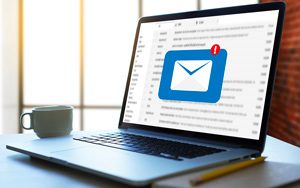 Ever wonder how many views your email blasts are getting for your business? Almost every retailer is now sending emails with promotions, new product offers, and other information to try and get the consumer’s attention, so it can be difficult to get your voice heard among the mass flow. A new study by Pitchbox and Backlinko Finds have some advice on how to deal with this ongoing problem.
Ever wonder how many views your email blasts are getting for your business? Almost every retailer is now sending emails with promotions, new product offers, and other information to try and get the consumer’s attention, so it can be difficult to get your voice heard among the mass flow. A new study by Pitchbox and Backlinko Finds have some advice on how to deal with this ongoing problem.
According to analysis of 12 million outreach emails, the study found that only one out of eight outreach emails receive a reply, which is 8.5%. There are many different reasons why so many emails are ignored, and luckily the study also investigated several factors that can improve email outreach reply and conversion rates.
The Subject Line Might be too Short
The average office worker receives 121 emails a day, so you want to make sure you stand out from the rest. The Pitchbox and Backlinko Finds study found that long subject lines get a significantly higher response rate than shorter subject lines. More specifically, subject lines between 36 to 50 characters get the best response rate.
The likely reason why longer subject lines get a better response rate is because retailers get the chance to fully describe the content of your message. For example, if you’re trying to let your customers know about a sale, a simple “Flash Sale” subject line doesn’t fully describe what kind of sale, and the reader is more likely to delete the email and move on. If you add more description such as, “Dresses and Accessories 20% Off This Weekend Only,” consumers will know the email involves something they’re interested in.
Sending Follow-up Messages Significantly Improves Response Rate
As surprising and annoying as you think follow-up emails can be, according to the study, multiple outreach emails work better than just one. While sending 3 or more messages results in the best overall response rate, sending just one additional follow-up can boost replies by 65.8%.
The reason why this tactic works is because customers are sifting through tons of emails every day, and the chances of your email getting seen or recognized can be pretty small. Sending a follow-up email can also remind the customer about your weekend-only sale, so if they’ve deleted the last email, that reminder can be the determining factor that brings them into your store.
Email Outreach Best Practice: Personalization
This fact is not-so surprising: the study showed that personalized subject lines got nearly 1/3rd more replies than those without personalization. And not only the subject line, but personalized body in the email can also significantly increase a response from the customer.
Personalization is sweeping the retail industry, so it’s no surprise that this tactic is the best practice. That’s why big retail brands such as Sephora and Victoria’s Secret make sure their emails cater to what a specific customer likes. For example, Sephora can keep track of what a customer purchases and send them deals on products or brands they like and seem to buy more of.
The Best Day to Send Out Emails
According to the Pitchbox and Backlinko Finds study, Wednesday appears to be the best day to send outreach emails, having a 22.1% higher relative response rate compared to those sent on Sunday. Weekdays overall have a higher response rate, while both Saturday and Sunday are significantly lower.
Don’t Forget Social Media
Linking to social media profiles may slightly improve response rates. According to the study, messages that contained links to social media profiles in the sender’s signature had a 9.8% higher average response rate compared to messages without them. If you aren’t including your Facebook, Instagram, or Twitter links at the ends of your emails, now is the perfect time to start doing it!
